Our section details the 2 days we spent exploring the marvellous city of Dijon. Another of the many UNESCO sites we have been fortunate to visit. Acquiring this tag due to being one of the biggest historical monuments in France. Incidentally the vineyards of Burgundy share the same status.
Should you be contemplating a visit to France, then Dijon is a must. We feel that it is a Paris in miniature; not that we have extensive experience of the latter. There is much to see and experience.
Dijon is a very old city and similar to just about all of Europe, has been ruled by many groups over time. In fact, way back when, Burgundy used to be its own nation. Dijon being the regional capital still has many impressive and historical buildings with administrative functions, still operational today.
After our self prepared breakfast (our room has its own kitchenette) with produce purchased from the excursion we undertook last evening, we decided to check out what the Owl Trail was about. A well constructed booklet was secured from the Office of Tourisme de Dijon in the central part of the city; just 5 minutes walk for us.
I offered Fred the opportunity to piggy-back me along the way: this she duly declined. “I need to let my breakfast settle down”, she indicated. We ate almost 30 minutes prior, surely that was enough time.
The track has some 23 stops and is negotiated by following small triangular owl symbols placed about 10 metres apart, on the footpath. Quite easy to negotiate in this completely flat city. Places of significance (current and the past) were visited. Many of these from the 14th century, the odd one surviving in its current state since the 13th century (eg the Notre Dame Cathedral) has some of the original buildings dating back to the 11th century. As you could imagine, solid stone and not likely to fall over in a hurry. Termites may also find themselves unemployed.
The Notre Dame being a most impressive structure which can be seen from all parts of the city, given the height of its spires. These disappear off into the sky. You will notice many of our photos have these spires in the background.
Fred and I stood and admired the structure: some 51 gargoyles peer down to street level from the front facade.
All different, with a mixture of humans (exhibiting some form of distress or anger) and animals (with aggressive poses). The Notre Dame for Fred was the highlight, as it was where we were to find her “lucky owl”, which the locals rub with their left hand (the hand nearest the heart), for good luck. It is somewhat worn from the many caresses it has endured.
From an overall perspective, the city is relatively untouched. Left alone from World Wars, for many of the buildings, time has been the only enemy. Modernism is quite restricted with the tallest buildings being only a few storeys high. Like all European cities, there are quite old areas and newer areas. Dijon “Centrale” is almost entirely old. Hence, my earlier comment about being a mini Paris.
Some of our experiences over the 2 days:
- We visited a La Moutardie - a mustard outlet and production outlet. Shelves full of mustard bottles of varying sizes. A unique tasting facility allowed us to sample a few of these. Fred was not all that impressed: I quite like mustards: especially the typical “Dijon mustard” that I am sure we have all tasted. We relieved this outlet of a few small bottles that we would use along the way. It was interesting, that while Dijon is seen to be the mustard capital of the world, it imports the seed from Canada !!
- French cuisine experiences would not be complete without a visit to a patisserie - this we did. Fred was first to venture in and started an enquiry as to what the flavours of the many “meringue cakes” on display. Generally Fred finds it difficult to speak to those who won’t or can’t speak English, so by the time I had arrived, the young girl behind the counter seemed to be at the arrogant stage of explaining. This was somewhat quelled when we made a purchase, only to receive a excessive handful of coins as change. We expressed surprise at this, with the young girl just walking away. I guess we were dismissive of this as another example of (apparent) French arrogance: perhaps we have all experienced this in our travel ? We walked past this patisserie a number of times over our time here: each time peering in to see if we could wave to our “sweet hero”. Still, the meringues were well appreciated with Fred making a couple of fruit salads and mixing in the sweet.
- fromage (cheese) is probably central to the French diet. Fromageries (cheese outlets), are very common in Dijon. Quite common to see these outlets full of people: we visited one in particular a couple of times and handed over a few euros in exchange for some exotic cheeses. These outlets tend to cater for a culinary experience with wines and other accompaniments on offer.
- Other unusual shops we noticed in the city included Truffle outlets (Burgundy is well known for its truffles). You can even go on a truffle hunt as a tour. The truffle taste seems to infiltrate all varieties of food. I didn’t see any truffle corn flakes though. Restoration parlours were very common. Furniture and art being the major focus here given the characteristics of the city. Given the locality, a lot of period and french influenced furniture would be in demand. Our hotel was one which had some of this established. each room of our hotel having a different decor.
Our first day in Dijon was rather enjoyable. Looking around at the buildings and visiting the outlets above. We decided to eat back at home (just a few minutes away from anywhere in the central city area). Breads, cheeses, fruit and Italian wine we had brought from Tuscany. The hotel had a garden area at the rear, well furnished and very suitable. So we had a relaxing time in the garden, listing to rugby league from Australia. Later, we returned to see the central city area at night.
It had started drizzling but not sufficient to keep us indoors.
Our second day was to focus on completing our “Owl Trail” and checking out the local La Halle markets at which the local producers market their wares. A typical market but what captured our attention was the unique stalls which sold the many meats, cheeses and the like. With the absence of large supermarkets, it appeared that the locals were out buying their fresh foods etc for the week.
I found rather fascinating the cheese outlets. Large wheels of cheeses from which the sellers cut the required portions. Fred reckons I was “mesmerised”, stopping and watching the process for some minutes: I just responded with a cheesy grin. Admittedly, I could have stood watching for an extended period.
In the markets, we decided to purchase some fresh food and do some cooking at home. French sausages seemed to take our fancy, so we had a little fun explaining to the lady at the markets which ones we wanted. She was very tolerant and patient with us. We chose the Toulous variety thinking that a totally french variety would be appropriate.
One “poulie” the other “porc”.
We are very limited with our French .... numbers are OK as long as we don’t have to go past “triox”, and as we don’t have to say much more than bonjour and au revoir, then we get through. This is part of the fun though. Marcel Marceau would be proud of us. Hand gestures make me look like a trainee Italian. Many of the French are bi-lingual though, so this helps us through: they seem to be very tolerant of tourists etc, unless you work in a patisserie.
We are making an effort to be French though, we think !!
With the obligatory bread (so many to choose from) and some more fromage from Fred’s favourite Fromagerie along with one or two other items, we were off to have our French garden lunch back at the hotel and then later cook up our sausages etc for dinner, all to be washed down with a residual bottle of Italian Chianti. A reserve listed Chianti that we bought at the winery in Tuscany. It was one we selected after our extensive tasting that I told you about in an earlier chapter. Looking forward to this: a couple of Aussies in France drinking Italian wine, nonetheless.
Back at the l’aparthotel, quick preparation of the food and extremely accurate slicing by myself of the breads, quickly produced a lunch fit for the french duchy.
We were to later venture out to finish off our “Owl Trail” exercise. Again seeing some rather spectacular buildings of french architecture and full of history. The French Revolution (only one spin ?) contributed a great deal of the character of Dijon. Standing outside of buildings that Napoleon had something to do with all those years ago, was a little awe inspiring. I stood there and took the Napoleonic stance with hand pushed into my jacket. I should have taken a selfie. Fred would not join in the french National Anthem with me.
Dijon has a mix of the wider streets and the quite narrow cobbled stone streets with the narrow drainage channel in the middle. These go back to the early 1700s: each of the Rue is generally named after a person of prominence when the street was formed along with a date. It was interesting noting the dates as we walked around.
The naming of the Rue was undertaken by selecting a person who was influential in the profession that was agglomerated along the Rue. As we understand, professions (eg artisans, stone masons etc) tended to congregate in one area.
Such an interesting place: so much to see in such a small area.
A few points to close this section off:
- In France, business stops around lunch time: yes even restaurants close or at least stop serving around the 1230-1400 hours. Very few businesses are open. How can restaurants close around lunchtime when you want people to come and eat in your restaurant. Is there such a thing as an French Irishman ? Perhaps the locals are used to this, but for the uninitiated, this is a trap. On a couple of times, it became obvious that we were to be moved on had we not realised what time it was.
- We have been in France now for about 8 days and we are yet to see a French Poodle !! Is there an export industry here that sends all the poodles to Australia ? If so, when are the dogs trained to understand English ?
- The “blue cheese” we saw in the Fromagerie a day or so earlier, which was almost complete mould bound, had been sold when we visited the second time. A picture of this rather attractive piece of cheese is included for your reference. What does this tell you about the french and their obsession with cheese ?
In lieu of the (almost) mandatory competition, perhaps a few thoughts on any or all of the rather revealing and earth shattering points listed above, could be ventured ? Your thoughts and comments would be appreciated. I am a fan of “blue cheese”, just for the record.
Au revoir

 Dijon, Bourgogne-Franche-Comté, France
Dijon, Bourgogne-Franche-Comté, France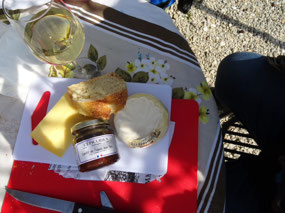
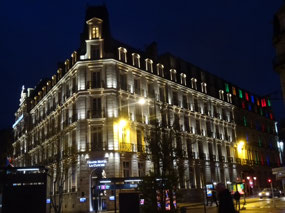
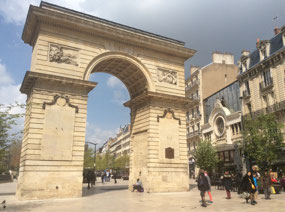

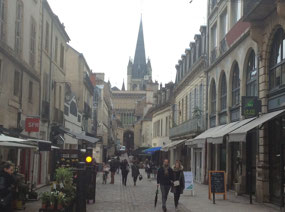
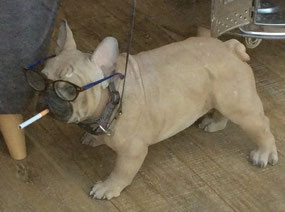
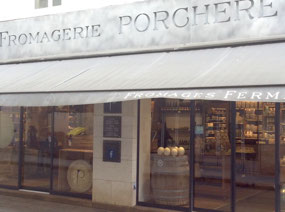
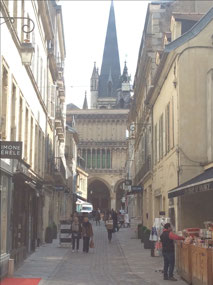
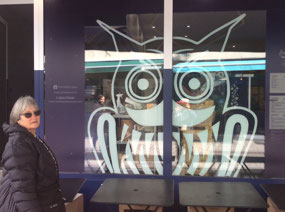









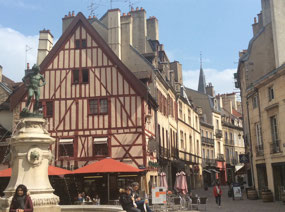

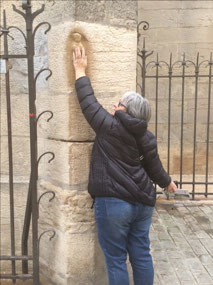
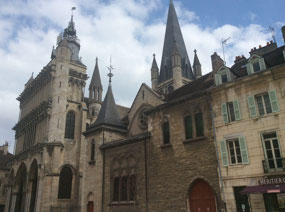
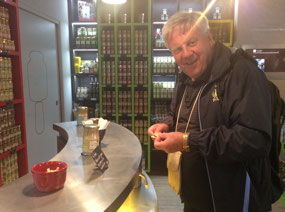
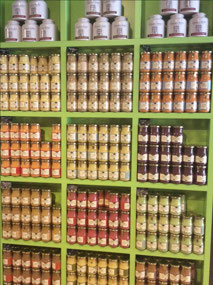


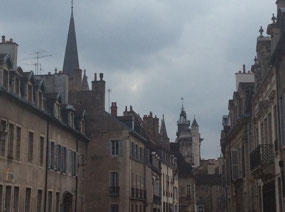
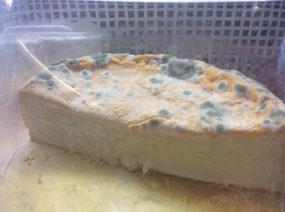
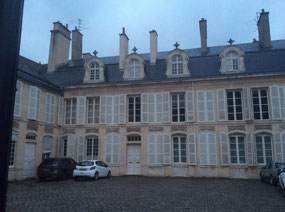
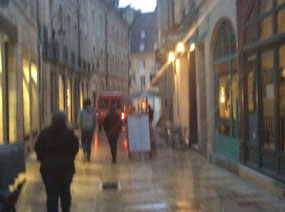
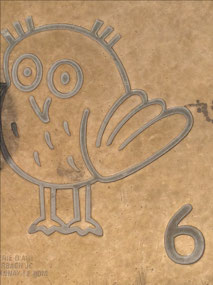
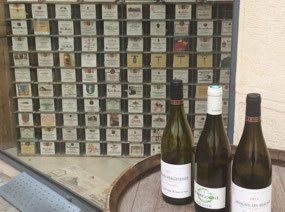
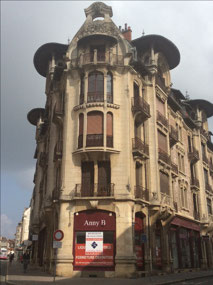


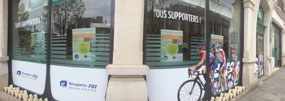

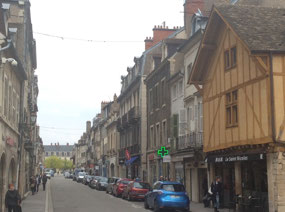
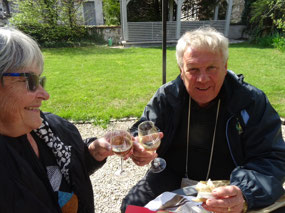
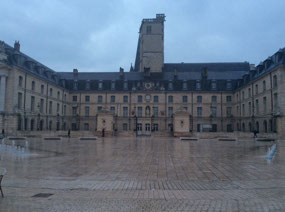
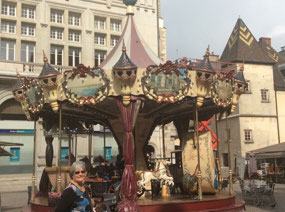
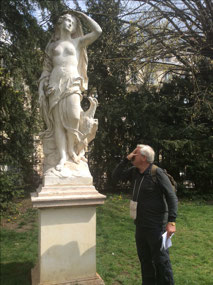


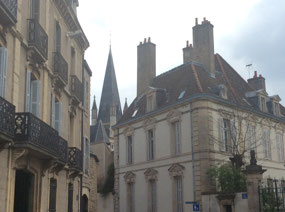

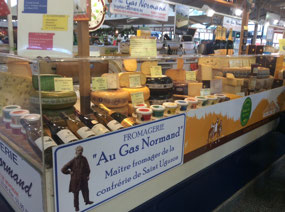
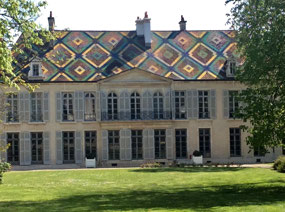
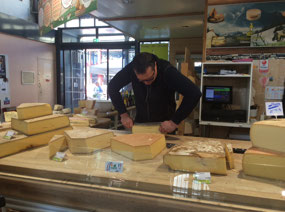

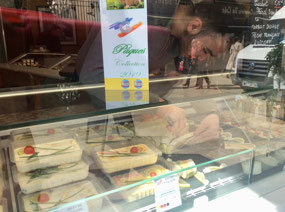
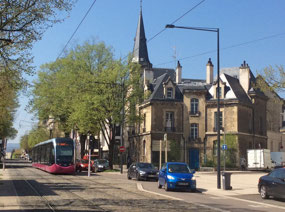
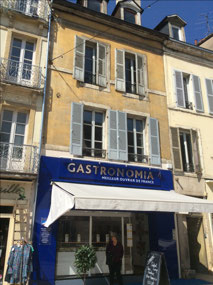
John S
2019-04-13
Don’t worry about not being able to speak the French language. I avoid speaking French in lieu of English.
Northern
2019-04-14
Your photos are wonderful sounds like you are having a wonderful holiday and enjoying the food and wine x
Jonelle
2019-04-14
The arrogance you speak of is what i found the most upsetting being away from home. Visiting Ity after Framce was a relief for me as i felt they were much nicer.
Jacquie
2019-04-30
I have now added Dijon on my list of places to go to.